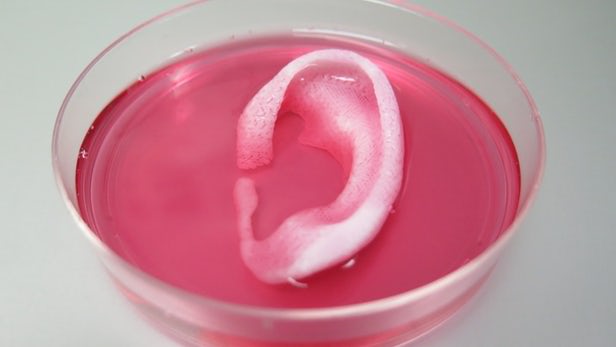The evolving technologies of 3D printing is changing the future of nearly every industry. Healthcare is undoubtedly the most critical area where advancements are making a difference. This printing technique, also known as additive fabrication, has gone from cheap plastics to using your own living tissue.
Printers can create 3D objects to any specifications. This makes it possible for surgeons to customize medical solutions for each patient. Here are four ways that this is transforming medicine.
1. Custom prosthetics
At one time, replacing a missing limb with a prosthetic device took a great deal of planning and specialty manufacturers involving high costs. Even then, results could be less than ideal. Growing children need frequent prosthetic upgrades. With today's computers and 3D printers, your measurements can be taken to create 3D prosthetics that are a precise fit. Even original designs can now be printed at a fraction of the time and cost of traditional prosthetic manufacture, and often in a day or two, while ensuring better results.Related articles
2. New skin
Now you can donate your own skin cells, which are incubated and grown into sufficient quantities for treatment. Using 3D printers and mesh frameworks as needed for contouring, physicians can now replace human skin with tissue that your immune system won't reject. Burn victims or those suffering from melanoma or pigment disorders could have a better outlook on life. As the technology improves, it may one day be fast and affordable enough for common needs like eliminating tattoos or birthmarks.3. Replacement parts
Laboratory trials have helped to improve methods of reproducing tissue and even incorporating high-tech devices into your procedure. Princeton University, for example, was able to create an ear from human cells that incorporated nanoparticles into the natural structure of the inner ear. The result was the ability to detect sounds beyond the normal range of frequencies. With the ability to also print bones, ligaments, and other cell types, your replacement parts might even be improvements.4. Reconstructive surgery
John C. Lincoln Medical Center in Phoenix, Ariozna, known for its advanced plastic surgery, was able to use 3D printing to recreate the facial structure of an accident victim, restoring a normal appearance that would have been impossible just ten years ago. Soon, doctors will be able to reconstruct accident or degenerative disease damage using your own DNA to fabricate bones, blood vessels, skin, and muscle tissue.The medical uses of 3D printing are limited only by surgical capabilities. But as robotic surgical tools and nanotechnology also improve, these technologies will allow patients with many types of health problems to be treated effectively, cheaply, and almost automatically. Soon, even nurses and other medical professionals will be able to incorporate 3D printing technology into everyday treatment.
| By | Embed |
Author Bio - Dixie is a freelance writer who loves to write about business, finance and self improvement. She lives in Arizona with her husband and three beautiful daughters. | |





0 comments:
Post a Comment